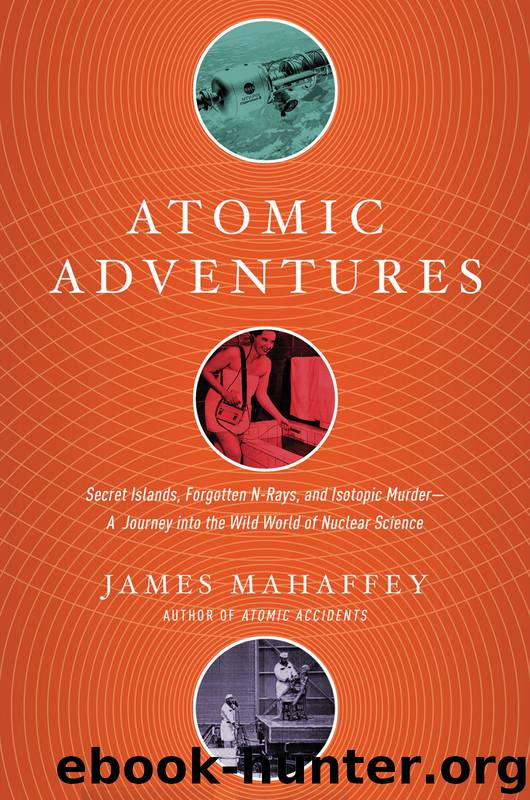Atomic Adventures by James Mahaffey

Author:James Mahaffey
Language: eng
Format: mobi, epub
Publisher: Pegasus Books
Published: 2017-06-15T04:00:00+00:00
_________________
133 For what started out in 1947 as a “Third World” country with many technical disadvantages, Pakistan has turned into a manufacturing economy of notable accomplishment. The first Unilever factory for making vegetable oil was built in Rahim Yar Khan in 1958, and Unilever moved on to make everything from Lifebuoy soap to Lux dishwashing detergent in Pakistan. The Pakistan Soap Manufacturer’s Association reported in 2014 that Pakistan now makes 120,000 metric tons of toilet soap per year. That is 60 percent of the domestic consumer demand. Eleven percent is made up for by smuggling of the product by the Afghan Transit Trade, and the rest is imported.
134 In April that same year, 1955, representatives from Pakistan and China met at the Bandung (Asian-African) Conference, held at Bandung, Indonesia, and the two countries mutually recognized their importance to each other. China wanted Pakistan to counterbalance the west side of India as a nagging threat, and Pakistan wanted technical assistance from China for certain projects. India was a growing problem for China, with Himalayan boundary disputes and an unease in Tibet, thought to be encouraged by India. Dr. Ahmed, feeling bold at the Atomic Energy Conference, asked the United States to sell Pakistan a CP-5 research reactor—for peaceful purposes, of course. “Not for all the tea in China,” replied the United States, aware of the meeting in Bandung. The CP-5 used metallic uranium-aluminum fuel, fully enriched to 94 percent U-235, and with a full fuel-core load plus a couple of spares, Pakistan could have its revenge on New Delhi with a 16-kiloton atomic bomb built using the fuel. (The Georgia Tech Research Reactor was a CP-5.)
135 The 1620 was a very small computer at the time, about the size of a large desk, but it was designed for the type of calculations appropriate for nuclear research and development. CADET was an acronym for “Can’t Add, Doesn’t Even Try,” referring to its use of a lookup table instead of a logical adder for additions, a method of processor design that would reappear thirty years later in the Intel Pentium. The 1620 ran FORTRAN II (assuming that PAEC had bought the necessary extra memory option) and a simplified interpreter version called GOTRAN. Programs were composed on paper tape or punched cards, and the cycle time was an unusually sedate 20 milliseconds. For many decades, various versions of FORTRAN were used in the United States and around the world as the language of choice for most nuclear calculations and large-scale simulations.
136 If the United States had been ready for this event, we would have named it CHIC-1. We didn’t name Chinese weapons tests until CHIC-2 (CHInese Communist). The Chinese named the weapon “596,” meaning June 1959, the time when the Soviet Union refused to provide China with a prototype nuclear device. It was a solid-core implosion weapon, very similar to the Fat Man of World War II, only made with highly enriched U-235 instead of plutonium. It weighed a hefty 3,420 pounds, and the Chinese had no vehicle that could fly this bomb anywhere.
Download
This site does not store any files on its server. We only index and link to content provided by other sites. Please contact the content providers to delete copyright contents if any and email us, we'll remove relevant links or contents immediately.
The Complete Stick Figure Physics Tutorials by Allen Sarah(7307)
Secrets of Antigravity Propulsion: Tesla, UFOs, and Classified Aerospace Technology by Ph.D. Paul A. Laviolette(5309)
Thing Explainer by Randall Munroe(3875)
The River of Consciousness by Oliver Sacks(3535)
The Order of Time by Carlo Rovelli(3144)
How To by Randall Munroe(3031)
A Brief History of Time by Stephen Hawking(2959)
I Live in the Future & Here's How It Works by Nick Bilton(2934)
The Great Unknown by Marcus du Sautoy(2645)
What If?: Serious Scientific Answers to Absurd Hypothetical Questions by Randall Munroe(2637)
Midnight in Chernobyl by Adam Higginbotham(2483)
Blockchain: Ultimate Step By Step Guide To Understanding Blockchain Technology, Bitcoin Creation, and the future of Money (Novice to Expert) by Keizer Söze(2444)
Networks: An Introduction by Newman Mark(2358)
The Meaning of it All by Richard Feynman(2298)
Easy Electronics by Charles Platt(2281)
The Tao of Physics by Fritjof Capra(2227)
Midnight in Chernobyl: The Untold Story of the World's Greatest Nuclear Disaster by Adam Higginbotham(2176)
When by Daniel H Pink(2082)
Introducing Relativity by Bruce Bassett(2076)
